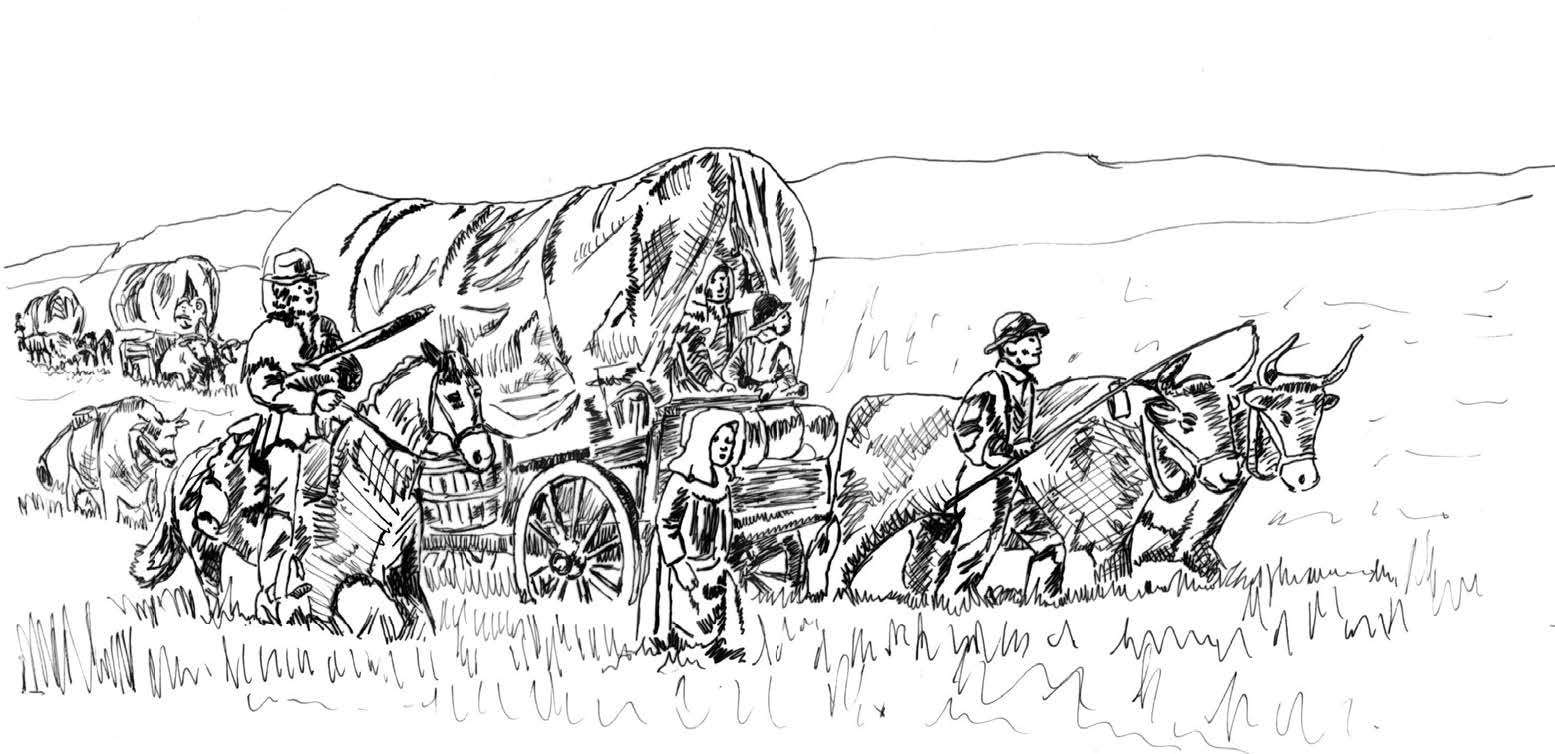
The Oregon Trail was a pathway across the United States. It led from east to west. The west held the promise of new opportunities. The American Dream. Moving west offered people the chance to start big farms and find their fortunes. Whole families emigrated, or moved, from east to west following the Oregon Trail. They piled all their belongings into a wagon and started their journey. They were known as pioneers.
Thousands of families became pioneers and traveled west on the Oregon Trail. It was a 2,000-mile trip.
Most pioneers walked the whole way, often barefoot. Their wagons were too heavy for horses to pull. They used strong oxen or cattle. The going was slow and rough.
Many pioneers traveled in wagon trains. Wagon trains were made up of many wagons that followed each other west. Some trains were 5 miles long and could have hundreds of people.
There were many dangers on the Oregon Trail, but nothing was more dangerous than cholera (KAWL-er-uh). Not baseball-sized hail. Not freezing to death in winter. Not getting crushed under wagon wheels. Not even drowning in a river crossing.
Cholera killed more emigrants than anything else along the Oregon Trail. During bad outbreaks, cholera killed two-thirds of entire wagon trains.
Pioneers got cholera from contaminated water or food. On the Oregon Trail, they didn’t have running water or toilets. They drank water from nearby streams and rivers. They dug holes in the ground for toilets. Many emigrants probably didn’t wash their hands afterward. Rain washed the contents of the holes into the streams or rivers. This contaminated the water. Handling food without washing their hands contaminated the food.
Cholera is a bad way to die. It gets into your gut. It can make you vomit. It can give you muscle cramps. It gives you nasty, watery diarrhea. This can dry out your body very fast. It can make your body shut down. Cholera could kill a healthy pioneer in just a few hours.



 About BeeLine
About BeeLine